Hi, I’m Nicholas Martin. I’ve been in the pest control industry for over 25 years. Customers often ask me what do bed bugs look like and how to identify them to prevent the next infestation on time. That’s why I decided to write this guide to answer all the important questions.
To make the guide more descriptive, I supply every paragraph with real bed bug pictures. Using my guide, you can prepare yourself for bed bug infestation that may potentially happen or spot the problem at any stage. Read on to learn more!
What Are Bed Bugs
Bed bugs are parasitic insects that adapted to survive in close proximity to humans and feed on blood. The name of this pest is due to its favorite habitat, the human bed! Despite the tiny size, the parasite can cause you tons of unforgettable troubles.
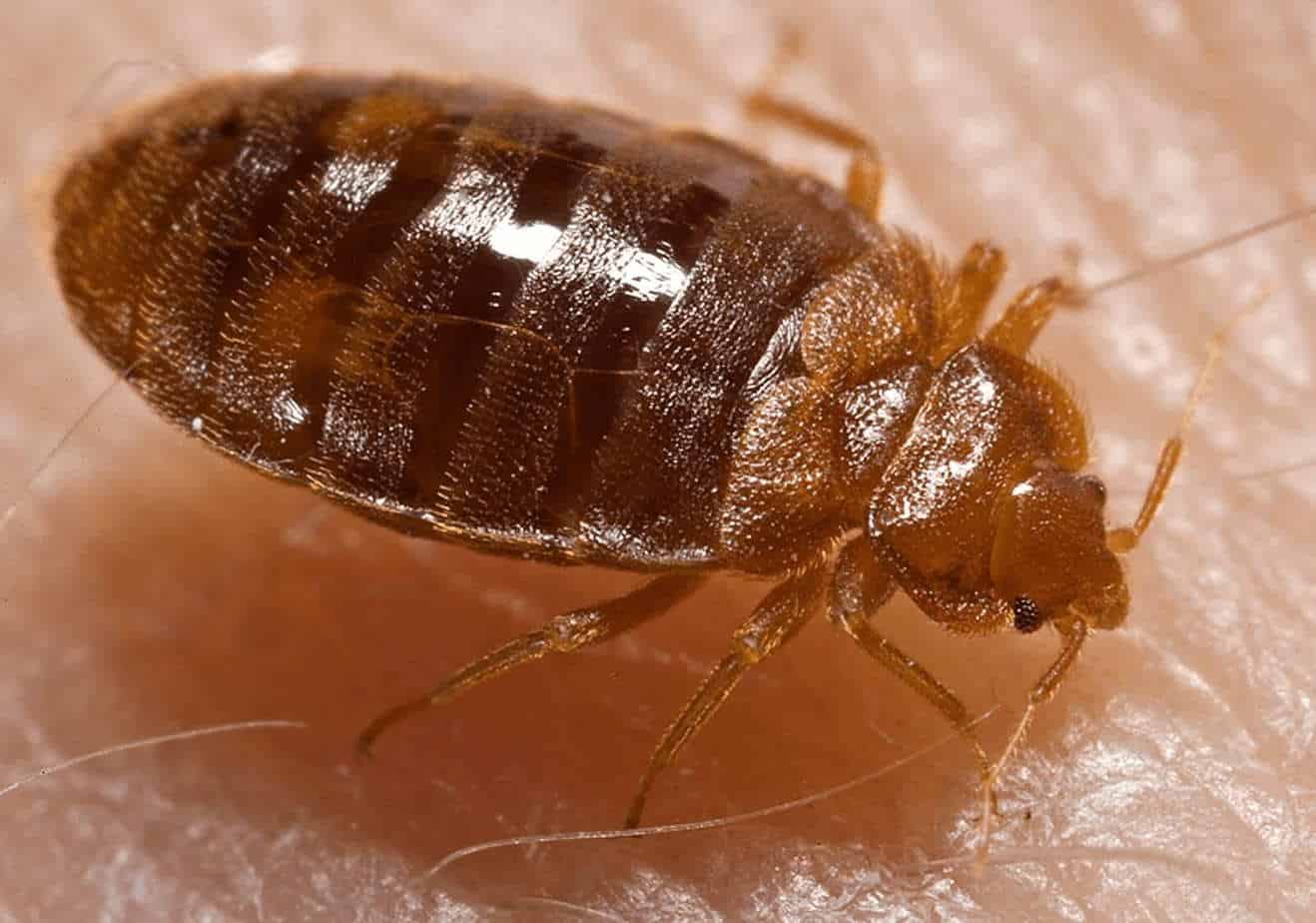
The first problem is the bed bug bites. The most common symptoms include rashes. Bed bug bites can lead to various health issues. Take a look at pictures of bed bug bites below to make sure that the bites on your body don’t belong to simple mosquitos or other pests.
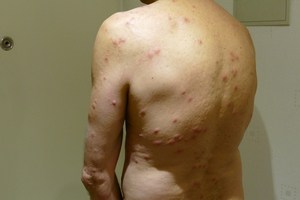
The bites can become evident during minutes or several days after the bite. Some people don’t react to bed bug bites at all. They can be easily confused with bites of fleas, ticks, and other domestic pests. The skin symptoms are also similar to common types of hives, fungal infections and some stages of eczema.
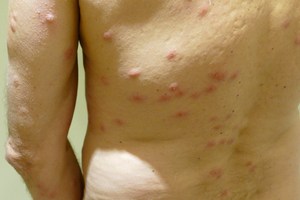
The allergic reaction may cause fever or fatigue. In rare cases, tough complications, such as vasculitis or even necrosis. However, you won’t face such consequences if you are healthy and live in a clean house.
It’s also impossible to catch infections through a bedbug bite, so don’t worry too much if you’re facing the problem of bed bugs. However, you shouldn’t start treating the symptoms without seeing your doctor first.
Bed bugs are widely spread all over the world, and it’s usually rather difficult to get rid of them, as they can survive in unobvious places for up to a year without food. If you travel a lot, think about moving into an old house, or want to buy second-hand furniture, you should detect bed bug larvae and adult bugs before it’s too late.
What Do Bed Bugs Look Like
Unless you’re an entomologist, it’s quite easy to confuse bed bugs with other small brown bugs. As you can see on bed bug images above and below, an adult specimen has a tiny prolonged oval-shaped brown or reddish-brown body. The size can’t be bigger than an apple seed.
The actual size of a bed bug is from 1 to 7 mm. A bug is flat when it’s hungry and starts to look like a balloon after it is full. This feature is similar to ticks and fleas, so be vigilant. To distinguish them right, you should know what do bed bugs look like up close.
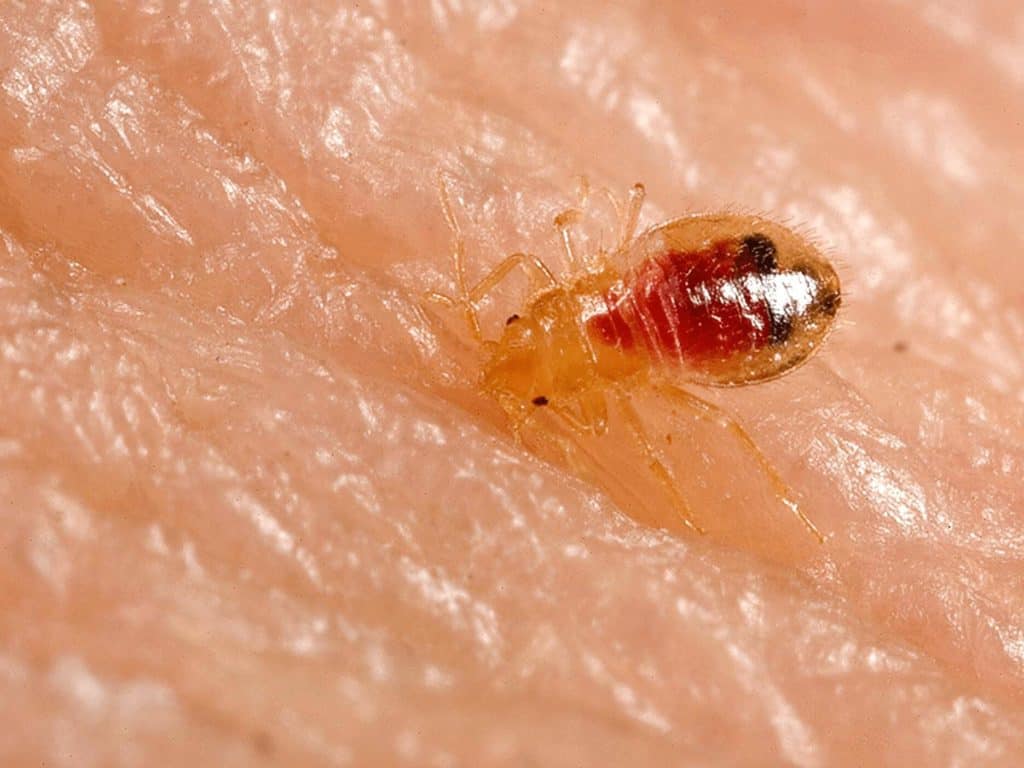
Identification Basics
How many legs do bed bugs have? Six. But fleas also have 3 pairs of legs, so you can be confused easily. Chiggers have 4 pairs of legs and more ball-shaped bodies, which makes them easier to identify. Looking for bed bugs in your house, you shouldn’t be focused only on finding adult bugs, though, as they never leave their covers during the day and usually keep hiding at night if there’s no food around.
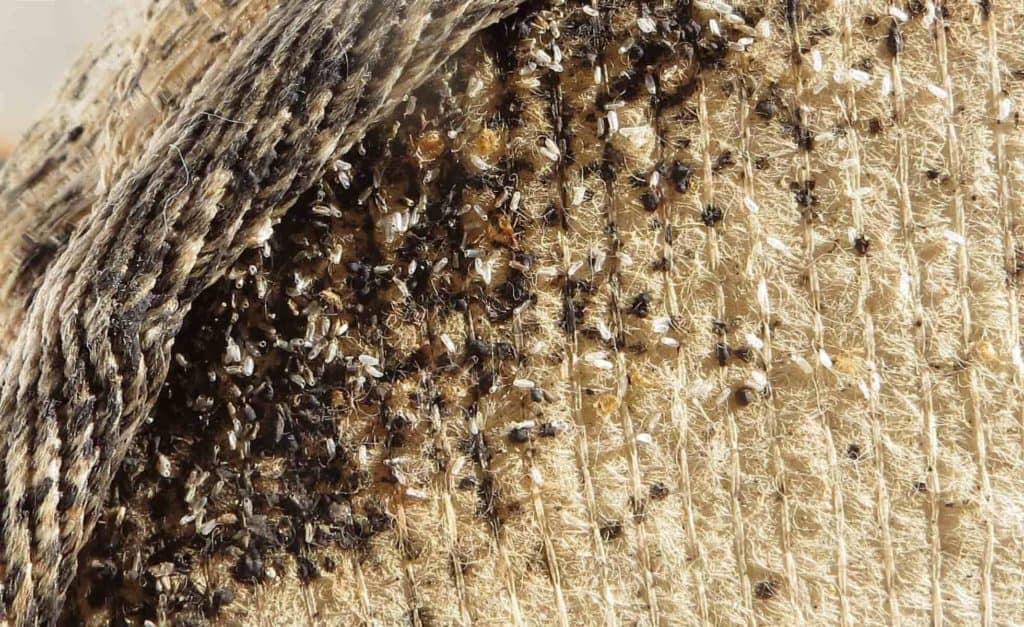
Look for other signs instead. True evidence of bed bug presence is rusty stains on your mattresses and sheets. Another sign is bed bug feces. They’re rather hard to see as they are small as a pencil point, but can tell you that a problem has started for sure. Bed bug fecal spots are also a sign of cockroach infestation, so double check your findings.
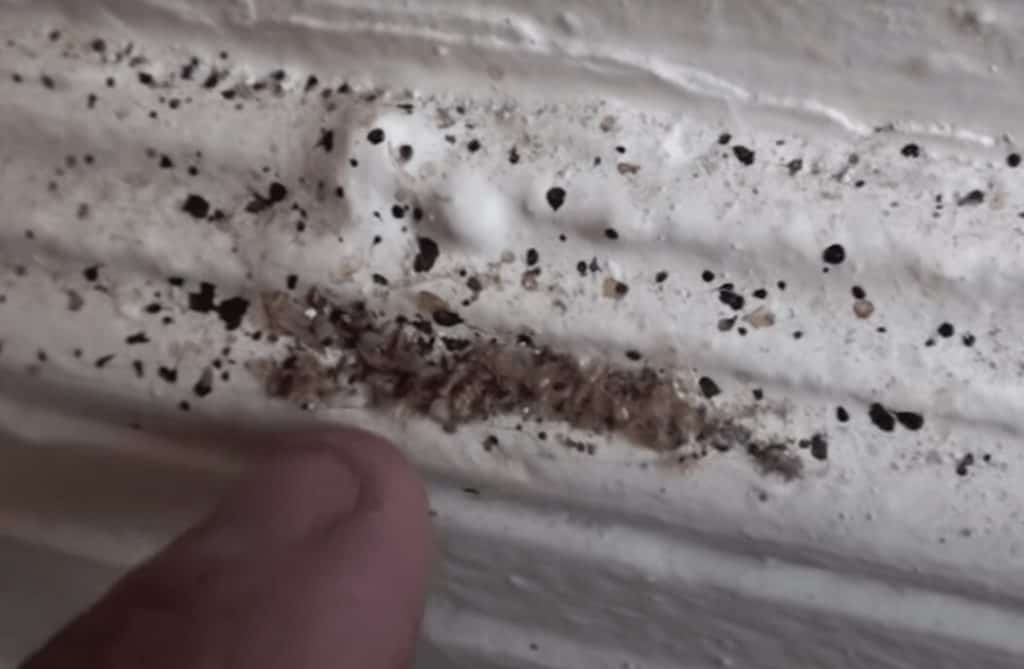
Unfortunately, the only way to make sure that feces on your furniture are left by bed bugs is to touch them. Wear thin medical gloves and touch them. Cockroach feces are always granular because they eat hard food. Bed bugs eat only blood, which means that they defecate with dried liquid. As a result, their spots have a smooth feel when you touch them.
Related Post: Most Effective Bed Bug Mattress Covers.

The next common question is, what does a baby bed bug look like. As you can see in the image below, baby bed bugs, which are also called nymphs, are almost identical to adult species. However, their bodies are more transparent, colored in light reddish-brown, and have visible black points on their backs.
If you find baby bed bugs, it means that there are several adults around for sure. If a nymph insect is hungry, it can even be of pale yellow or almost white color.
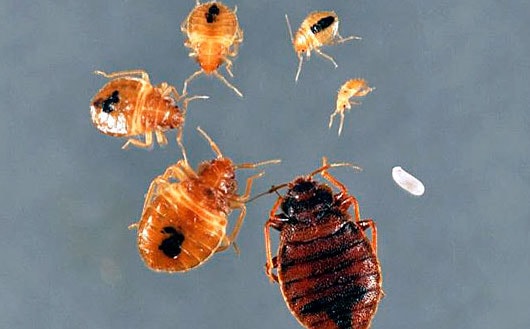
The lifecycle of a bed bug includes 7 stages, such as:
- Larva;
- Five stages of nymphs;
- Adult insect.

When a bed bug reaches the final development stage, it can start to mate and lay eggs. A single female insect can lay up to 250 eggs during its life. The eggs hatch in 6-10 days.
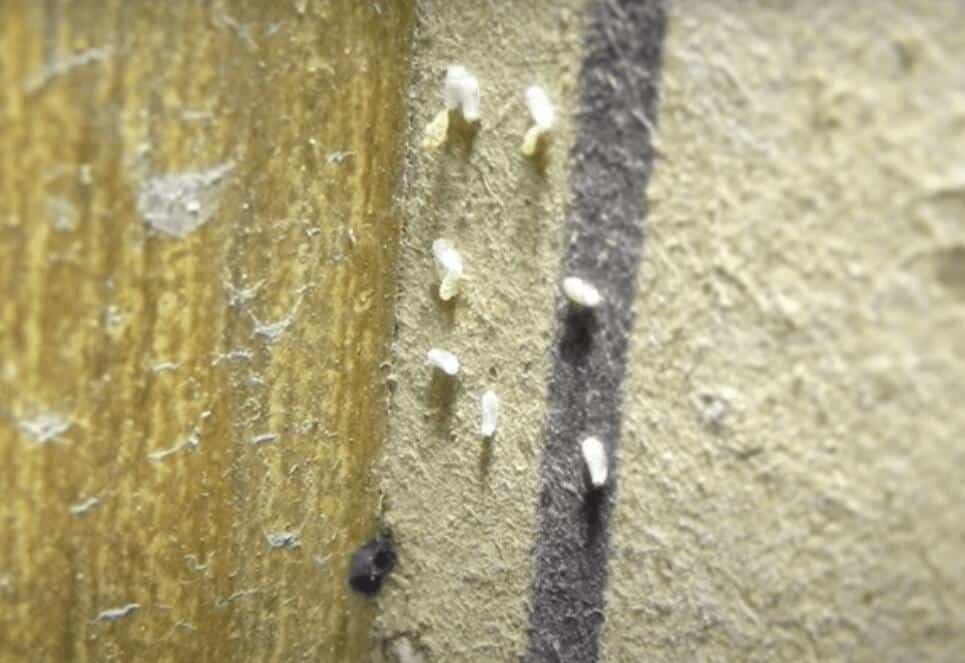
When parasites reach the first nymph stage, they need to find a source of blood to survive and keep progressing. Each nymph stage lasts 5-7 days if a bug can find a regular blood host. In fact, not all bugs reach the adult stage, but if they succeed, they can survive up to one year without food and keep replicating to let the population grow.
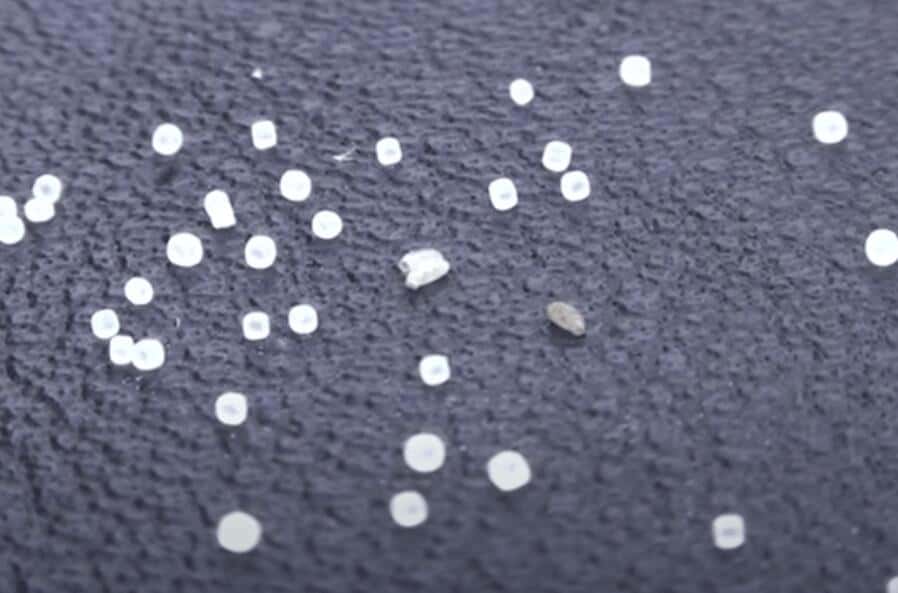
Where do Bed Bugs Hide
If the infestation doesn’t look like one of the pictures of bed bugs on mattress above, it can be quite difficult to find them if you don’t know their average shelters. Save the list of the most common hideaways and start the inspection. I recommend you to take a flashlight and a magnifying glass not to miss tiny eggs and larvae.

Common bed bug covers include:
- Pillows – check stitches, zippers, tags, and the padding;
- Mattresses – you should pay extra attention to zippers, tags, stitches, and other parts that have folds;
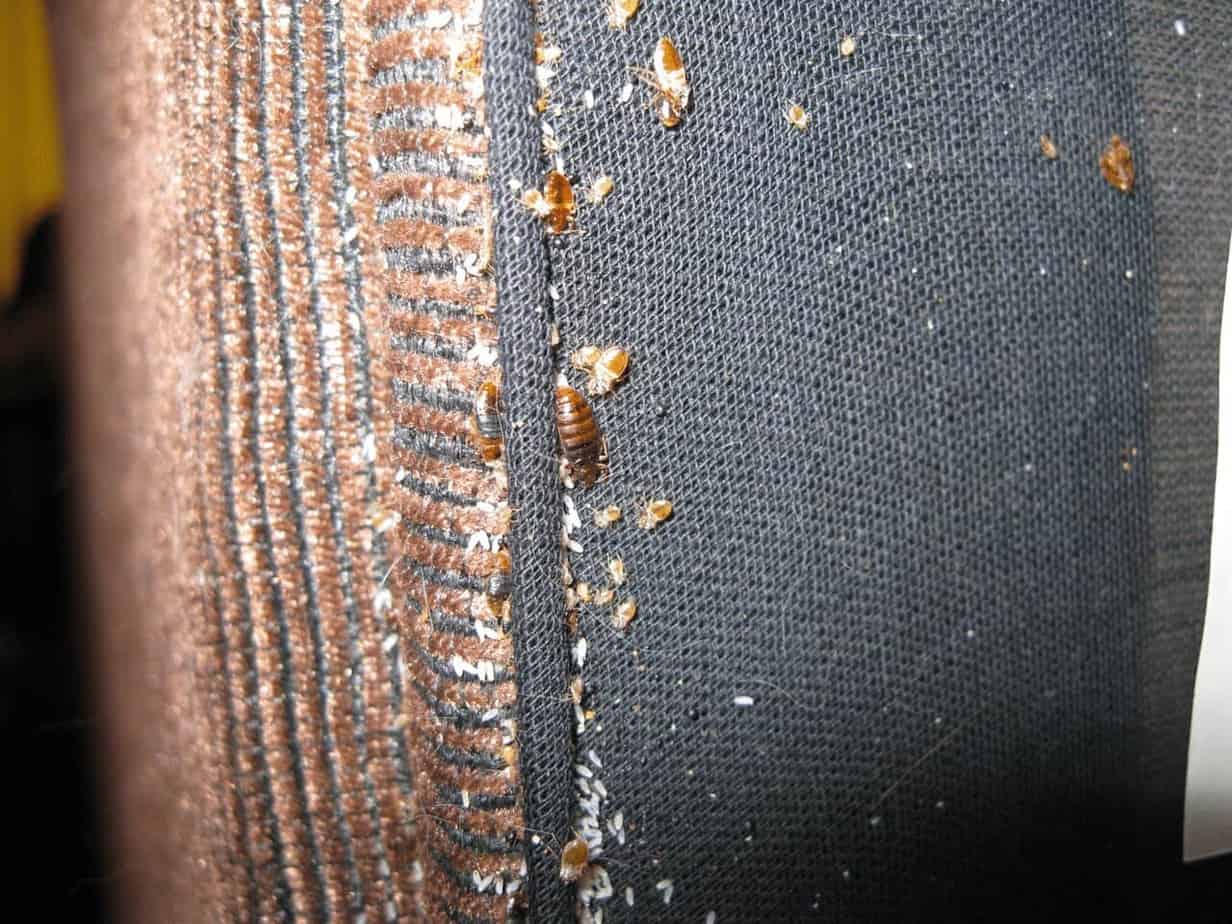
Bed bug larvae and adults in sofa stitches.
- Upholstered cushions – soft and fuzzy upholstery is a very convenient hideaway for bed bugs on all development stages;
- Suitcases & travel bags – every travel bag or suitcase has lots of stitches and folds inside, and pests love to travel along with you sitting there safe and sound;
- Cracks in furniture – look for cracks and roughnesses on your bed frames. Parasites can hide within any tiny crack and stay there for months if it doesn’t feel safe to come out. You can find them even within the screw heads of your furniture;
- Drawers – there are lots of joints in bedroom tables and other furniture around the house. These are not favorable, but rather common hideaways for insects;
- Loose wallpapers – even if you don’t know about loose wallpaper areas in your bedroom, these tiny bloodsuckers will find them for sure;
- Chipped paint – this one is similar to loose wallpapers;
- Curtains – check out the bottoms, rods, and pleating of your bedroom curtains. There’s always a chance that parasites hide in folds and stitches of your curtains;
- Bedroom carpets – in some cases, bed bugs can infest long-fiber carpets near your bed, so inspect them too;
- Outlets – not a common cover, but I’ve seen them there too;
- Under air conditioner base – this looks like a hard-to-reach area, but these pests are quite stubborn and can settle down under the ceiling as well. In addition, it’s a perfectly ventilated and cool place, which is great for lengthy surviving without food.
- Behind baseboards – this is perhaps the most secure hideaway for insects, as you can’t see them without dismantling baseboards. Check baseboard heaters too, if you have them. Bugs can breed there when you don’t use heating.
- Frames of vents – vents are similar to air conditioners as they create perfect cool and dry conditions for breeding and surviving.
- All types of wooden framing – as you can see on some of bed bug infestation pictures that I provide, bed bugs love cracks in the wood and wooden framings. Check them no matter where they are.
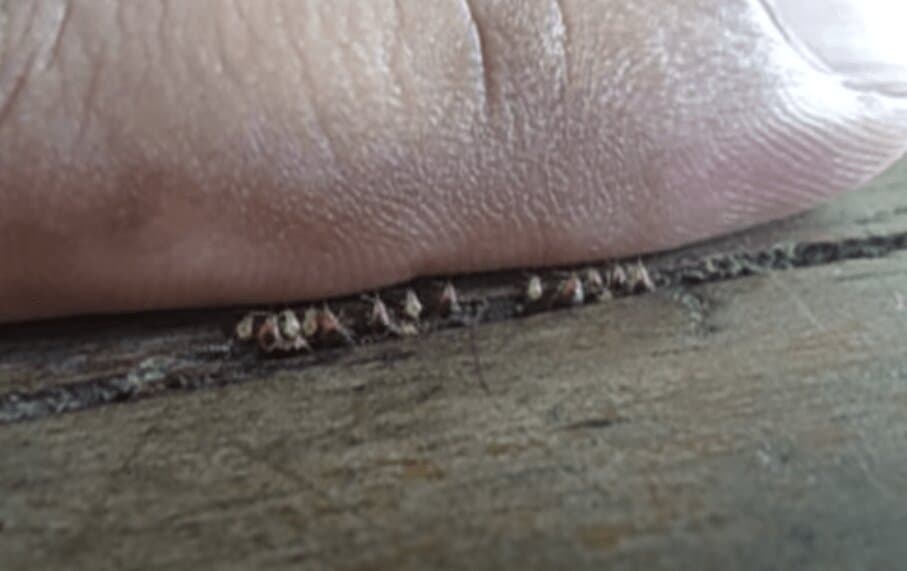
How to Identify Bed Bug Infestation
Now let’s learn how to find bed bugs. Most of my customers say that they start suspecting a bed bug infestation when they see specific bites on their skin. So, If you go to bed feeling fine and see itching bites in the morning, it can be considered as a sign.
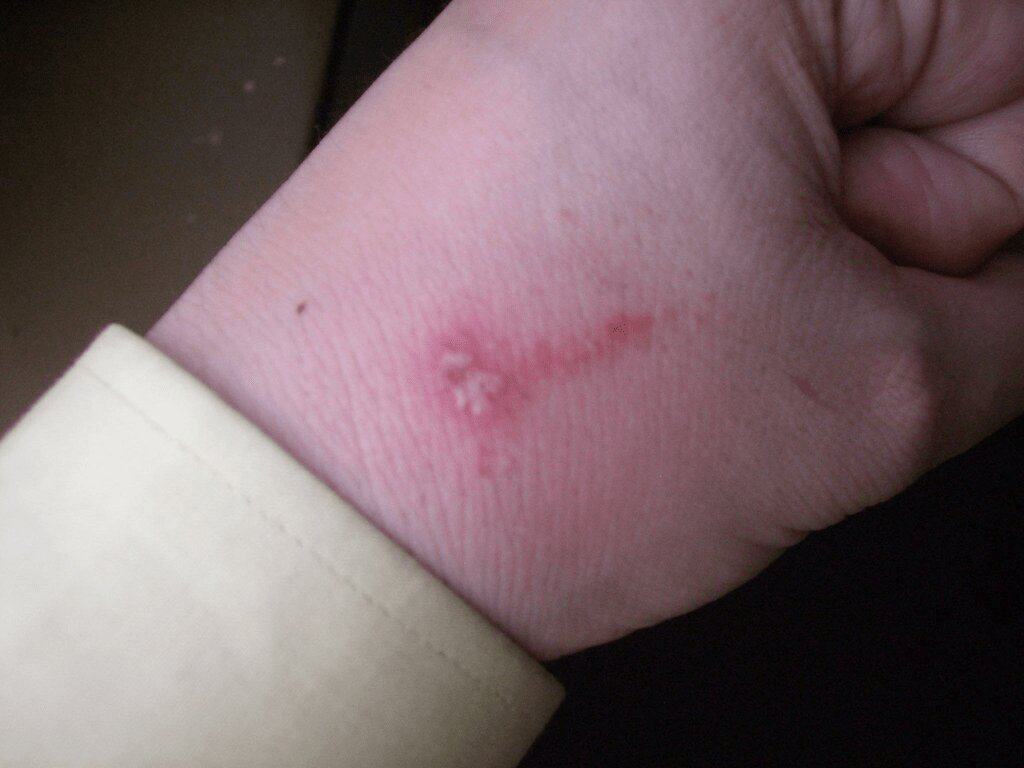
On the other hand, you should remember that bites can become feasible after several days. It means that a parasite could bite you during a trip, and your home isn’t infested. There’s also a chance that you were attacked by other insects. Besides, the common reason for itching bite-like spots all over the body is allergic hives.
Related Post: 7 Best Bed Bug Traps Reviewed.
Remember what you ate in the evening and make sure that you don’t have an allergy to one of the meal`s ingredients. Hives caused by tropical fruits, food chemicals, lactose, alcohol, and other products usually look very similar to bed bug bites. But if you see blisters and small bruises, know that you have typical parasite bites.
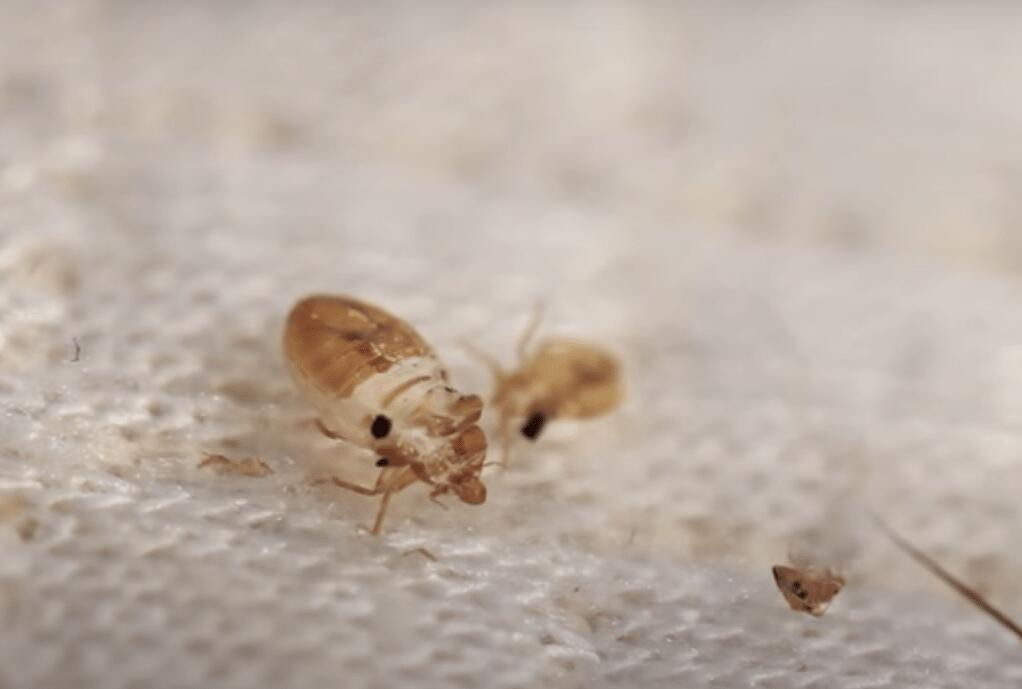
While bites don’t always mean that your home is infested, keep looking for other clues. The lifecycle of every bed bug implies shedding. These pests shed 5 times during their lives to reach the adult stage. As a result, they leave empty shells all-around their places. You can also find shed egg skins, but they’re extremely small and hard to notice.

When you’re on a trip, and you have to stay in a hotel or a rental apartment, you should inspect your mattress to make sure that there are no feces and larva.
Next, lift the mattress to check for eggs and adult species at the bottom. If you find them, hurry up to let the hotel staff know about it, ask for a new room, or book a room in another hotel if it’s possible.
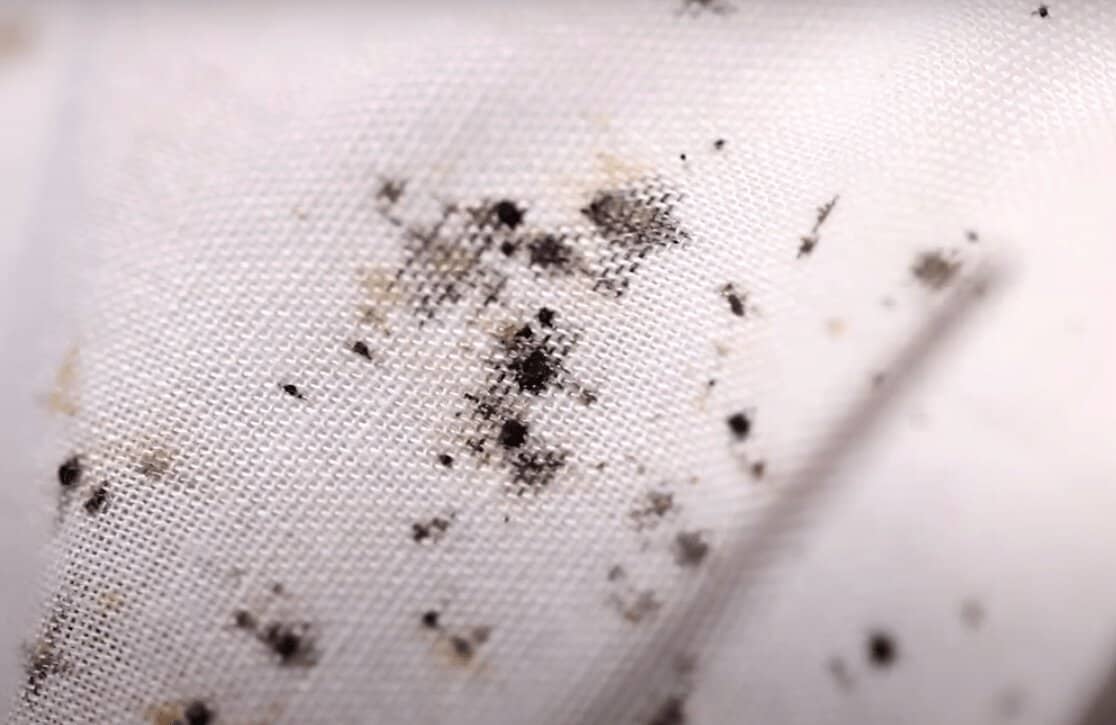
It’s also essential to keep your bags and cases away from beds and couches to make it hard for insects to get in there. If you’re not sure whether can bed bugs fly or not, don’t worry. They do have wings, but they cannot use them. Their legs are also unable to jump.
These 2 factors don’t let the parasites spread around as rapidly as fleas do. Bed bugs can smell humans and animals. That’s why it’s important to keep your dirty clothes in plastic bags during the journey in order to make your suitcase and clothes unattractive to pests.
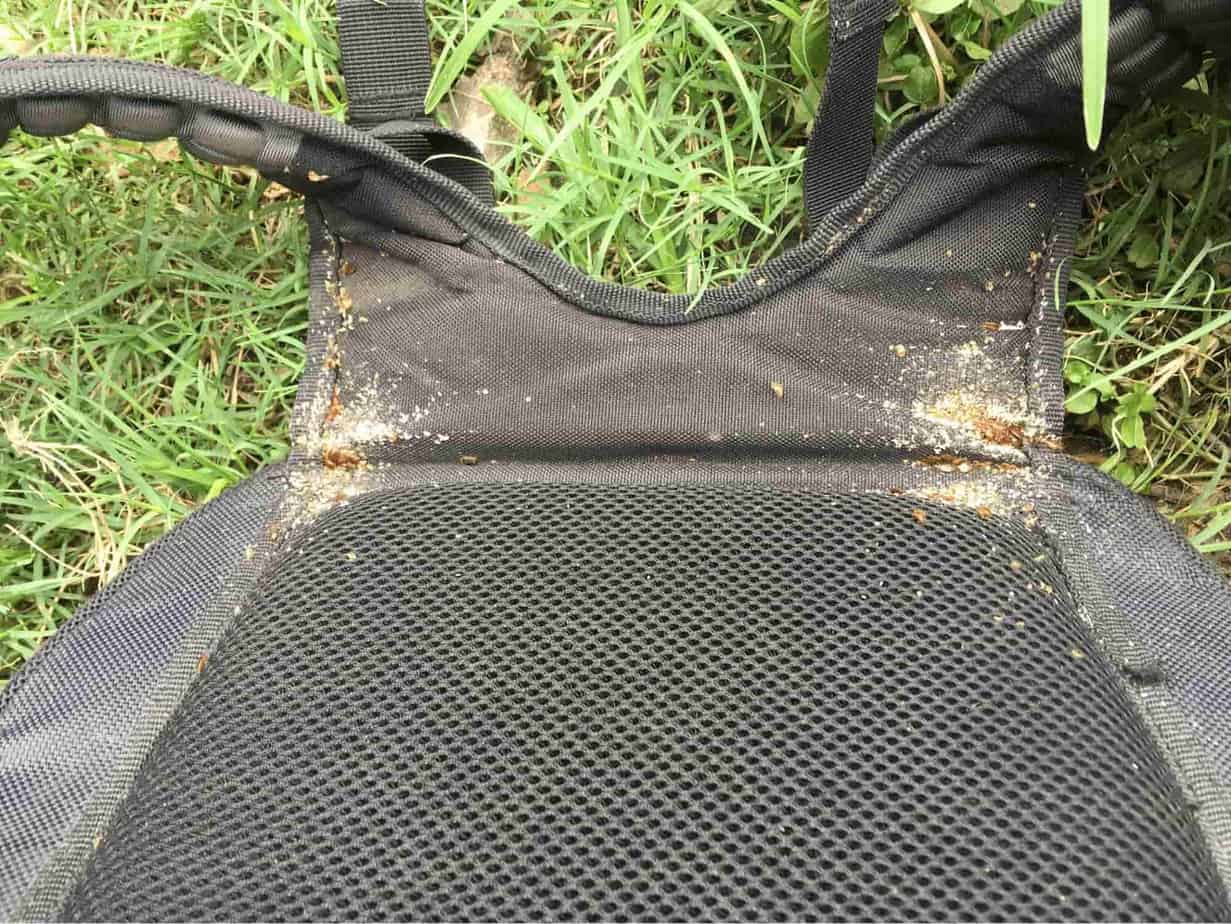
The last and the most apparent proof of the infestation is bed bug aggregations. Look at bed bug nest images above and below to understand what they look like. A typical gathering includes adult insects, nymphs, larvae, eggs, shed skins, and multiple feces.
Insects usually hold together to simplify mating. If you find such a gathering in your house, you have to call a professional to start serious treatment.
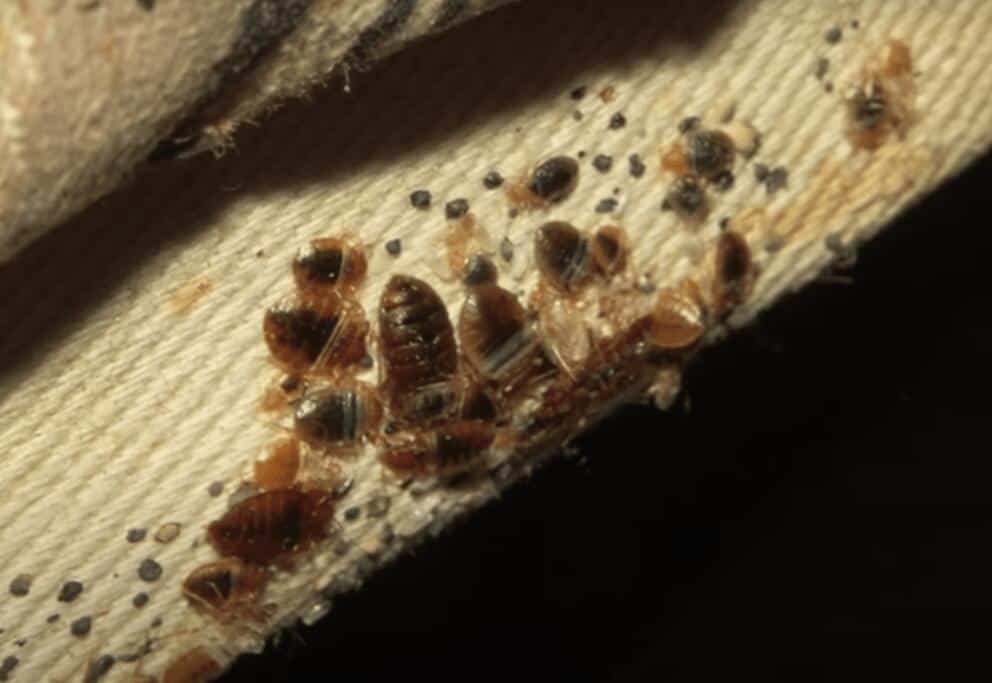
Summering up the infestation signs, here is a checklist that you can save to use right away:
- Itching bites over your body – low infestation probability;
- Fecal stains – medium infestation probability;
- Bed bug shed skins and nymphs – high probability;
- Live and hatched eggs – obvious infestation;
- Parasite aggregations – obvious infestation, call the professional
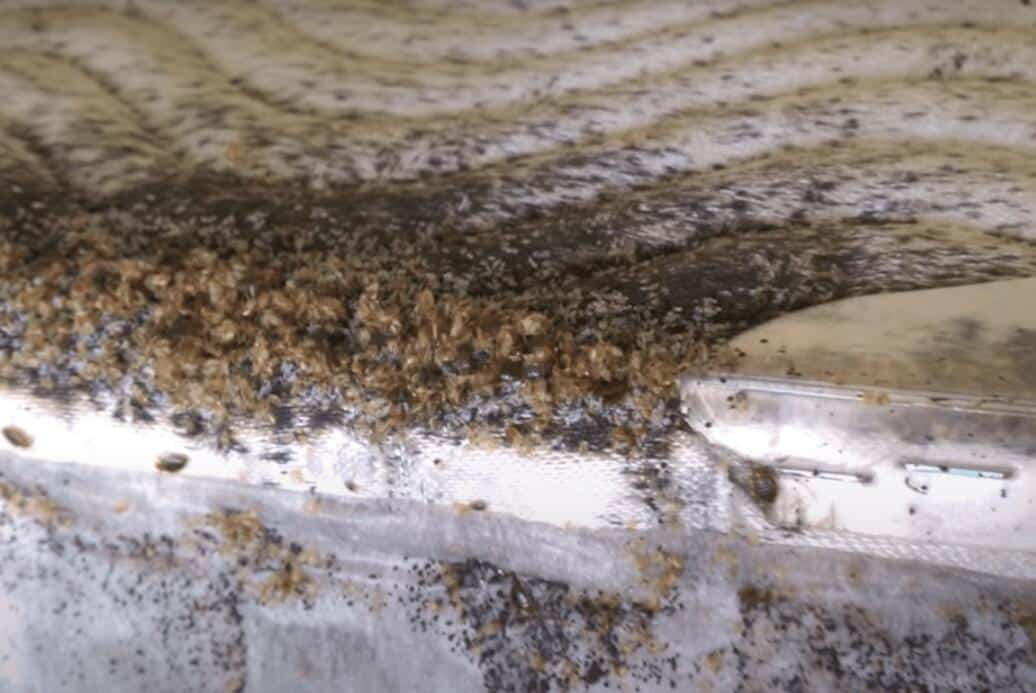
Horrific bed bug aggregation example.
Knowledge Is Power
Now that you know what do bed bugs look like, you can identify the infestation and start the treatment in time. You can come back to this guide to compare pics of bed bugs with what you see at home or hotel and estimate the size of the problem.
Remember, knowledge is the only way to fight these parasites effectively. Don’t panic and learn what not to do during the infestation, as this type of pests isn’t dangerous for your life. Start treatment in time, be patient, and you’ll get rid of them very soon.
Related Post:
- Best Bed Bug Heaters For Home & Commercial Use
- Most Effective Bed Bug Spray
- Best Bed Bug Bomb
- Essential Oils Against Bed Bugs
If you have any questions left after reading, you’re welcome to ask me in the comments or look for answers in other PestControlHacks articles related to bed bugs. You can also add value to the article and share your own experience in the comments section.
Have you ever faced a bed bug infestation? Tell us more about it below. Do you have any exciting stories related to the topic? We’re all eyes!
References:
- Bed Bugs (Entomology at the University of Kentucky):
https://entomology.ca.uky.edu/ef636 - Introduction to Bed Bugs (U.S. Environmental Protection Agency):
https://www.epa.gov/bedbugs/introduction-bed-bugs - How to Find Bed Bugs (U.S. Environmental Protection Agency):
https://www.epa.gov/bedbugs/how-find-bed-bugs - How to Identify a Bed Bug Infestation (Dini M. Miller, Ph.D., Department of Entomology, Virginia Tech):
https://ucanr.edu/sites/practice/files/269119.pdf
